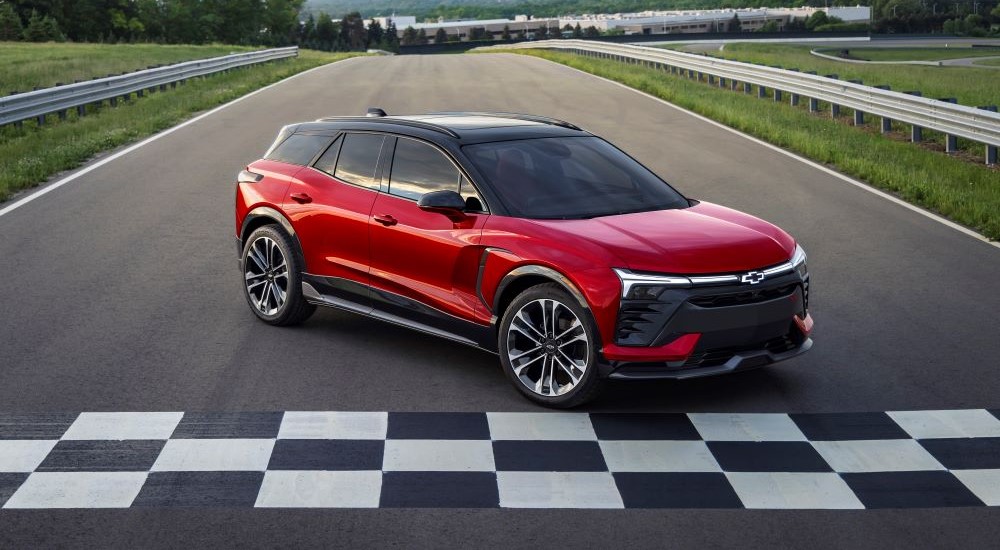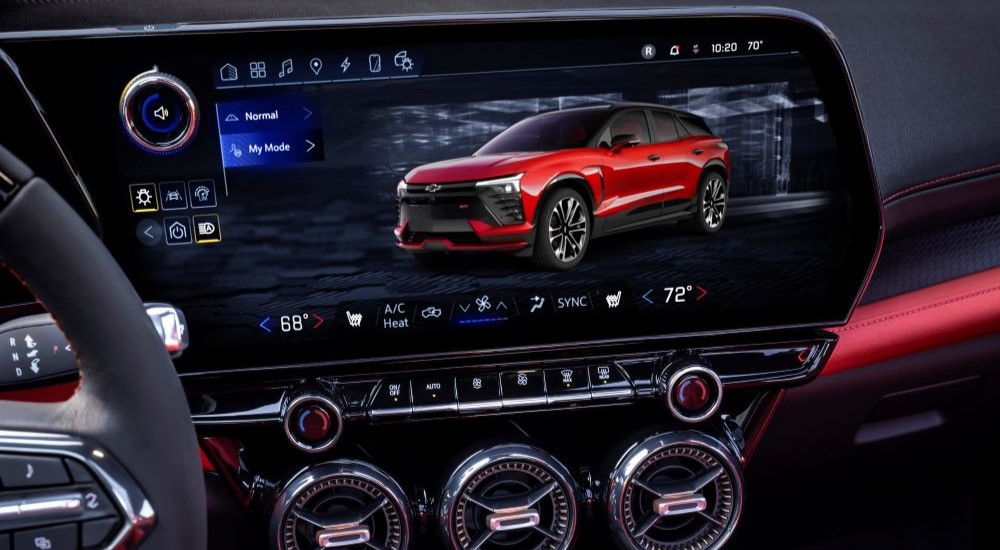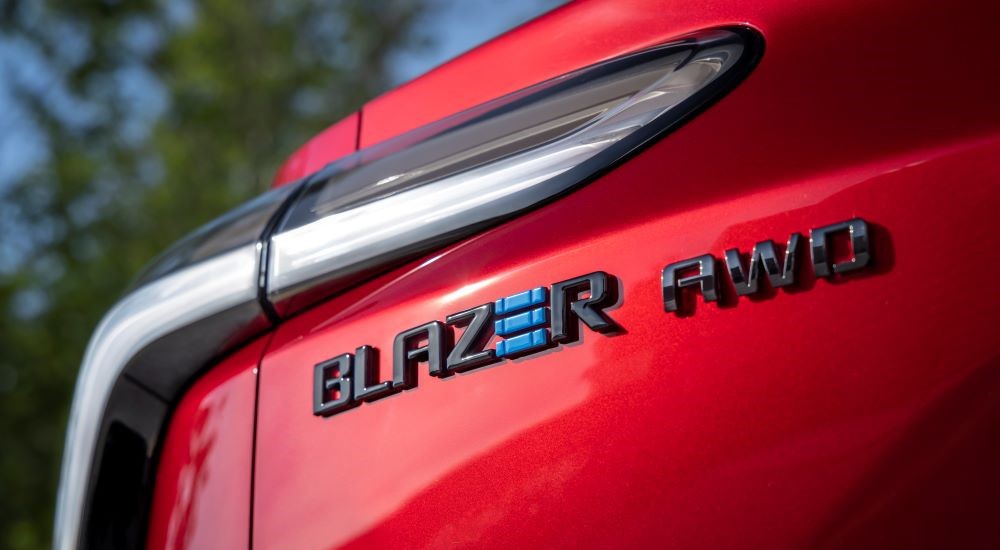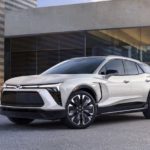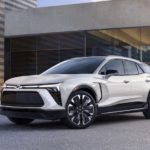The 2024 Chevy Blazer EV asks drivers to “reimagine what an SUV can be.” That’s all well and good, but many drivers have a distinct idea of what an SUV should be—especially one that claims to be eco-friendly.
According to the more seasoned drivers, there are a greater percentage of fools and bad drivers on the road than ever before (though that assessment might be biased). We have to choose between our driving needs and being a good person, whether that be the last time you cut someone off to make your exit or the first time you even purchased a car.
Specifically, we’ve had to compromise between buying the SUV we know we need and practicing what we preach about protecting the planet. But we shall compromise no longer now that the 2024 Chevy Blazer EV has arrived, allowing us to have our tenets and our cargo space—but how can this vehicle exist without some kind of sacrifice?
It’s now possible to buy a guilt-free SUV, but how do you know you’re doing the right thing, for you and for the planet? Let’s take a look at the 2024 Blazer EV and how Chevy plans to make good on its promise to the planet, one vehicle at a time.
The Lowdown on the Blazer EV
Since its debut in July 2022, the Chevy Blazer EV has generated a lot of buzz. Not only is it tangible proof that Chevy is intent on an electric future, but it has the distinction of being a familiar SUV that’s getting an electric makeover. For those who aren’t quite sold on the Bolt or Bolt EUV, the Blazer manages to be a regular, normal, expected SUV that just so happens to be electric.
Chevy’s Ultium platform has made a serious difference in what drivers have come to expect from electric vehicles. Depending on the model you select, you can expect between 247 to 320 miles of range. Features like Regen on Demand (momentarily prioritizing your regenerative braking) and One-Pedal Driving (forgoing the brake pedal for complete control with your accelerator) not only help us to get the most out of this setup, but they teach us to be fuel-conservative drivers who only use as much power as needed.
That being said, the Blazer EV’s SS trim—yes, there’s a Super Sport trim on an electric vehicle—cheerfully generates 557 hp in Wide Open Watts mode, allowing it to make the sprint from zero to sixty in just 4.0 seconds.
The other trims include the 1LT, 2LT, and RS. Standard features across this lineup include a 17.7-inch touchscreen as your infotainment system interface and the Chevy Safety Assist suite of driver assistance technology. The 2LT and RS trims are offered in your choice of front-wheel or all-wheel drive, while the SS trim is offered exclusively with all-wheel drive. Chevy’s Super Cruise driver assistance technology is available as an option on the SS trim, as well.
For those familiar with the Chevy Blazer, this should sound pretty standard. In fact, aside from the bold interior color palette and digital driver information center that tracks battery efficiency and power, it’s self-evident that the EV is a direct relative of the gas-powered vehicle of the same name.
Let’s Talk Environmental Impact
The most obvious and significant difference between the Blazer and the Blazer EV is, of course, the plug. Many American drivers are resistant to the idea of a plug-in vehicle for a variety of reasons.
First, there’s the practicality of it all. It’s true that, if you’re out and about, you would want to find a charging station between drives. And while there are over 40,000 public stations and counting, they aren’t as prominent as a gas station with its huge sign looming over the freeway. However, the myChevrolet app with Energy Assist can help you plan the most energy-efficient routes as well as help you find charging stations along the way.
It’s also true that you’ll need a specific converter to use a 240V Level 2 home charging unit. In many cases, the expense of this minor installation can be covered by incentives from Chevy, the federal government, and local utility services. Furthermore, the 120V Level 1 charging unit can be used truly anywhere; if you’re the type of person who plugs in your laptop or smartphone whenever you’re not using it, the same principle can be applied to your Blazer EV.
And what of the debate about how fossil fuels are still involved in the production of a great amount of the country’s electricity? How is removing one little gas-burning SUV from the road supposed to offset an entire nation of power plants and carbon footprints?
The 2024 Chevy Blazer EV does not use gasoline or oil—none. This means you won’t be dumping out and refilling motor oil every few thousand miles, and there’ll be no more stops at the gas station. Other than the coolant, brake fluid, and windshield wiper fluid, an EV doesn’t require regular fluid checks and thus greatly diminishes the subsequent disposal of toxic chemicals. There is no combustion engine, which means no fumes—just a clean, quiet ride.
A Smart Investment
Since this is the first-ever Chevy Blazer EV, there’s no way to truthfully suggest its potential impact. No one knows what the future will bring for this planet or for your finances. That said, there are no foreseeable reasons to believe the Blazer EV is a bad idea.
Chevy announced investments of billions of dollars toward engineering and manufacturing electric vehicles, saying, “Our commitment to the electric future is about making electric vehicles more accessible to all.” It is reasonable to believe that Chevy’s EVs will continue to evolve, with each model year getting a little more interesting and desirable than the previous year—but that’s true of every vehicle on the market since the beginning of automotive history.
As for reliability, Chevy provides 2024 Blazer EV drivers with an eight-year/100,000-mile battery limited warranty along with 24/7 roadside assistance. Chevy will also pay for your first maintenance visit. While this doesn’t guarantee that you’ll never have an issue with your vehicle, it does demonstrate Chevy’s confidence in its product.
Let Go of the Guilt, Get an SUV
It’s ok to say it: some of us really, truly need the size and space provided by an SUV. Yes, we realize that a Honda Civic would be much more environmentally friendly, but there are many things a Civic is structurally incapable of doing.
With the arrival of the 2024 Chevy Blazer EV, you no longer have to feel guilty about driving a “gas-guzzling land yacht.” While it’s true that gasoline-powered SUVs are becoming increasingly more economical, it’s a harsh reality that big cars need more fuel, and fossil fuels are increasingly unattractive.
But in the case of the Blazer EV, this big boy needs no fuel at all—just regular charging sessions. Chevy’s earnest investment in an electric future seems to indicate that this is not a passing fad, which means getting your first electric SUV soon would make you a pioneer in the next automotive revolution.
